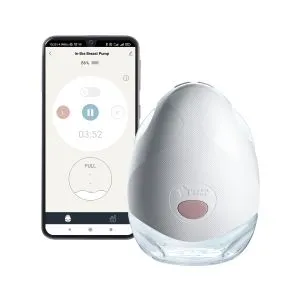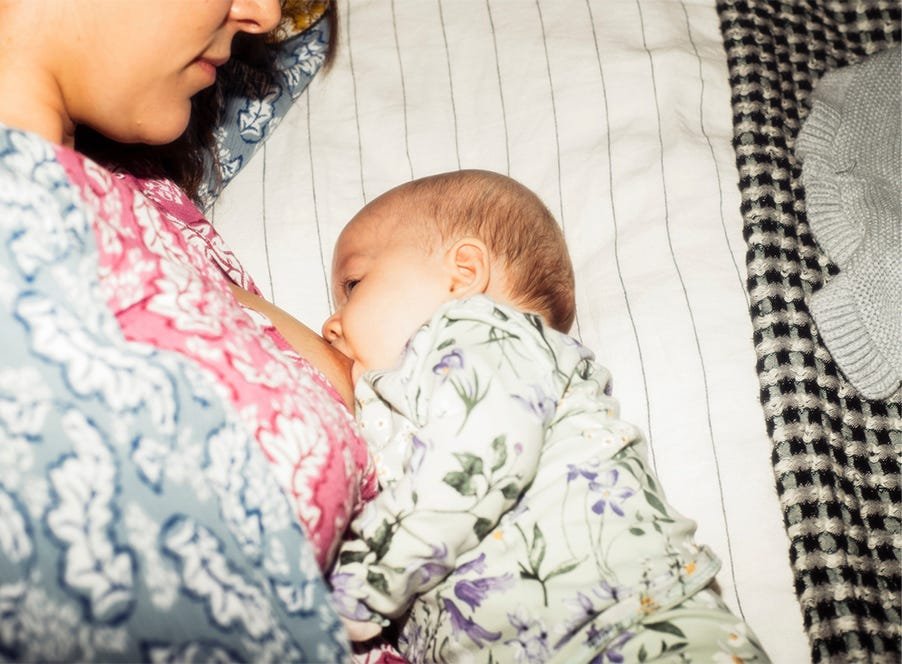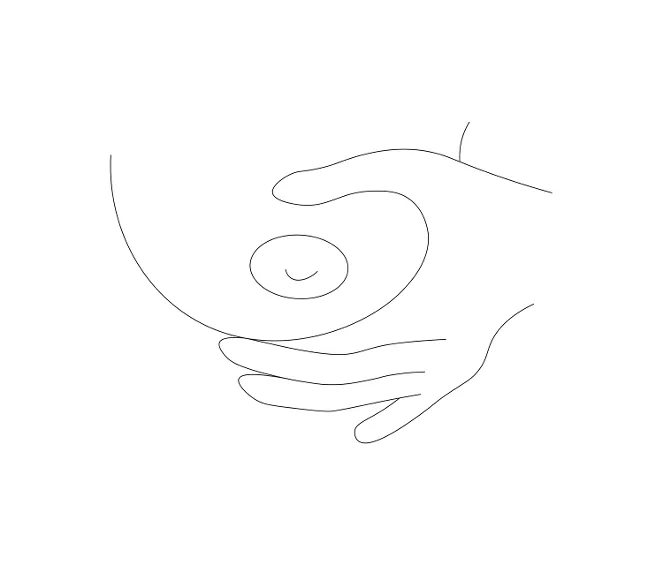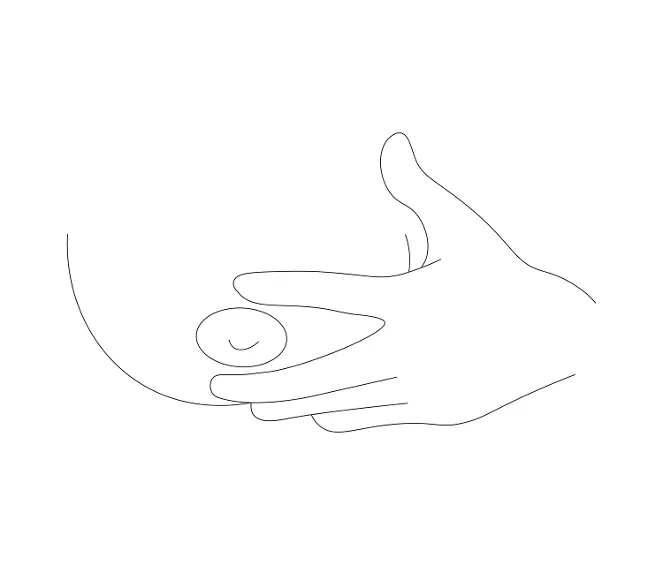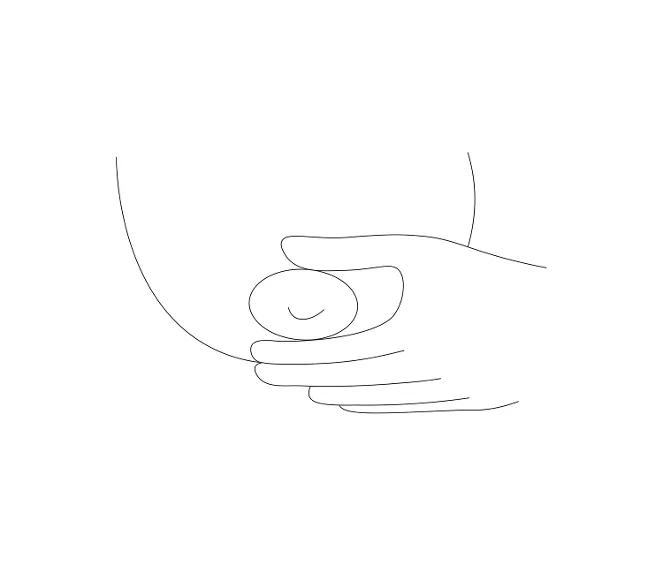When it comes to breastfeeding your baby, there's no one-size-fits-all 'perfect' position. And it may take a couple of tries before you figure out which breastfeeding positions work best for you and your little one.
Discover some of the most popular breastfeeding positions and read our helpful breastfeeding tips for helping your baby successfully latch and unlatch.
Breastfeeding positions for newborns
There are various breastfeeding positions - and it's a simple case of trying them out to see which works best for you and your little one.
Generally, when you're holding a baby to breastfeed, you should have them on one side, facing towards your breast. Their entire body should be in line and their head shouldn't be turned to the side.
Using a pillow can make manoeuvring them to your breast and holding them there easier.
Breastfeeding lying down
Breastfeeding while lying down can be a good option for night feeds, afternoon rests, or for parents who're recovering from a C-section, as baby doesn't put any pressure on the stomach as they feed.
If you do breastfeed while lying down, it's important to make sure that there's no excess bedding or pillows around baby. Lying down breastfeeding positions shouldn't be done while sitting on a sofa or recliner, due to a risk of suffocation.
Laid-back breastfeeding
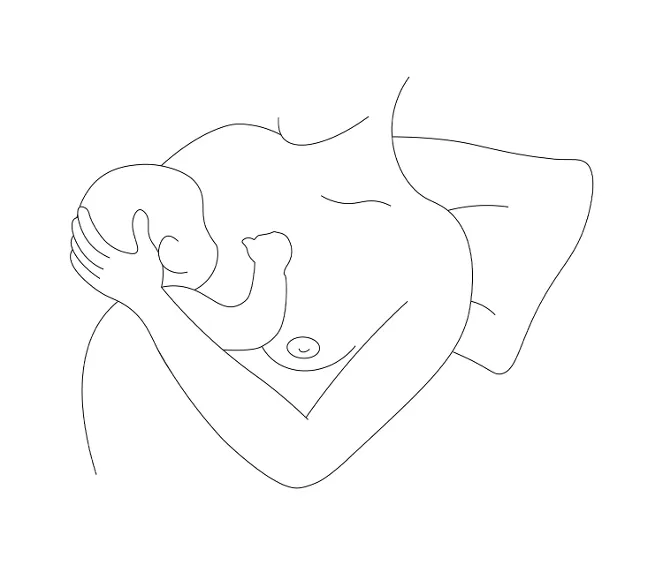
Also known as biological nursing, the laid-back breastfeeding position gives you and your baby snug comfort and support.
Simply lean back on your bed or in a chair and support yourself with pillows in a semi-reclined position. This position encourages your baby to latch on naturally and means you can lie back and relax. If your baby has gas or a sensitive tummy, you may find that a laid-back feeding position will help to relax them.
Side-lying

Breastfeeding lying down on your side is another popular position, particularly at nighttime.
You and your baby lie side by side facing each other. Rolling up a blanket and putting it behind your baby's back will keep them from rolling away from you. Similarly, you can try using a pillow behind your back or between your knees for extra support. You can also cradle your baby with your forearm along their back to help them feed.
This position is especially helpful for those feeding with bigger breasts since it takes the weight off the breast and is easier to get on your baby's level.
Upright breastfeeding positions
There are a variety of upright breastfeeding positions to choose from. Let's run through them to help you decide which one is right for you and your baby.
Cradle hold
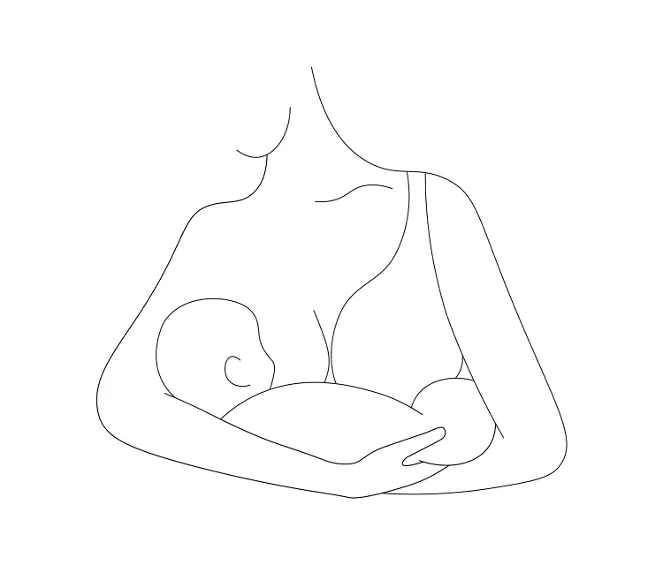
The cradle hold is a classic breastfeeding position, and it's probably the one that first springs to mind when you think about breastfeeding.
Sit upright and position your baby on their side with their neck resting on your forearm and their body positioned against your stomach. Having a cushion behind you is recommended to avoid back strain.
If you decide to use a breastfeeding pillow on your lap, be sure it doesn't position your baby higher than necessary to avoid them straining to latch. This position can often lead to baby's head being forced into an angle whilst feeding. So, it's best to make sure that baby is positioned in a straight line and not off to the side. Their body should be wrapped around your chest and their legs tucked in.
Cross-cradle hold

The cross-cradle hold is like the cradle hold, except that your arms switch roles so that your opposite forearm is supporting your baby's body.
This breastfeeding position is good for newborns or babies with difficulties latching on to the nipple. Simply hold your baby in the arm opposite the breast you're feeding from (making sure to support their neck and head). With your other hand, support your breast and cradle your baby close to it.
Once baby is latched on and sucking, you can swap arms to help you stay comfortable during longer feeds.
Rugby hold

The rugby or football breastfeeding hold (sometimes called the 'clutch position') can be achieved by cradling your baby in your arm - using your palm to support their neck - and nestling them closely against your side with their legs tucked underneath your arm.
This position is good for:
- Newborn babies
- Helping your baby handle your milk flow easier if you have a forceful letdown
- Those feeding multiple babies
- Parents who have smaller breasts
- Parents who are recovering from a caesarean or experiencing sore nipples.
Koala hold

Koala hold - also known as the straddle hold - involves the baby being held in an upright position, either on their parents lap or with their legs on either side of their parents legs.
This hold can be useful if you have an older baby who likes to look around as they feed. It can also be a good option if you have a fast milk flow and want to slow this down to make it more manageable for your baby.
Breastfeeding in a sling
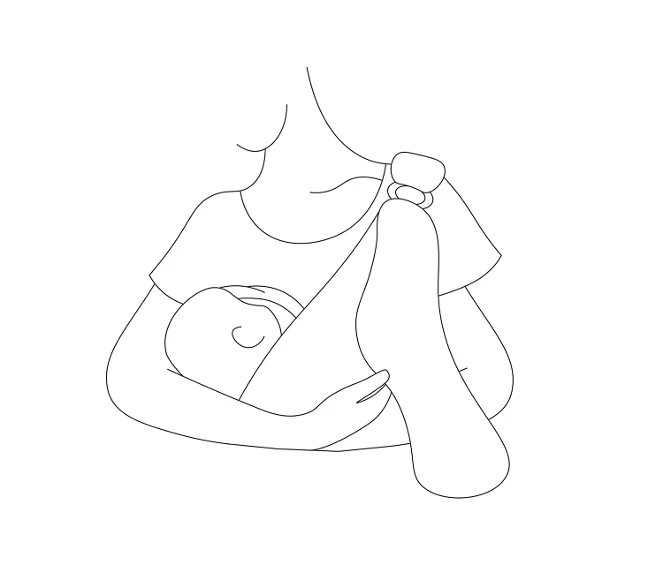
Parents who're out and about may find that breastfeeding while their baby is in a sling is very convenient and keeps their hands free.
Feeding while wearing a sling is best suited to older babies who can hold their head up independently. It can also be suitable for babies who want the comfort of being close to their parents body while feeding.
When feeding while wearing a sling, it’s important to make sure you can always see your baby’s face and that their chin isn't pressed in against their chest.



